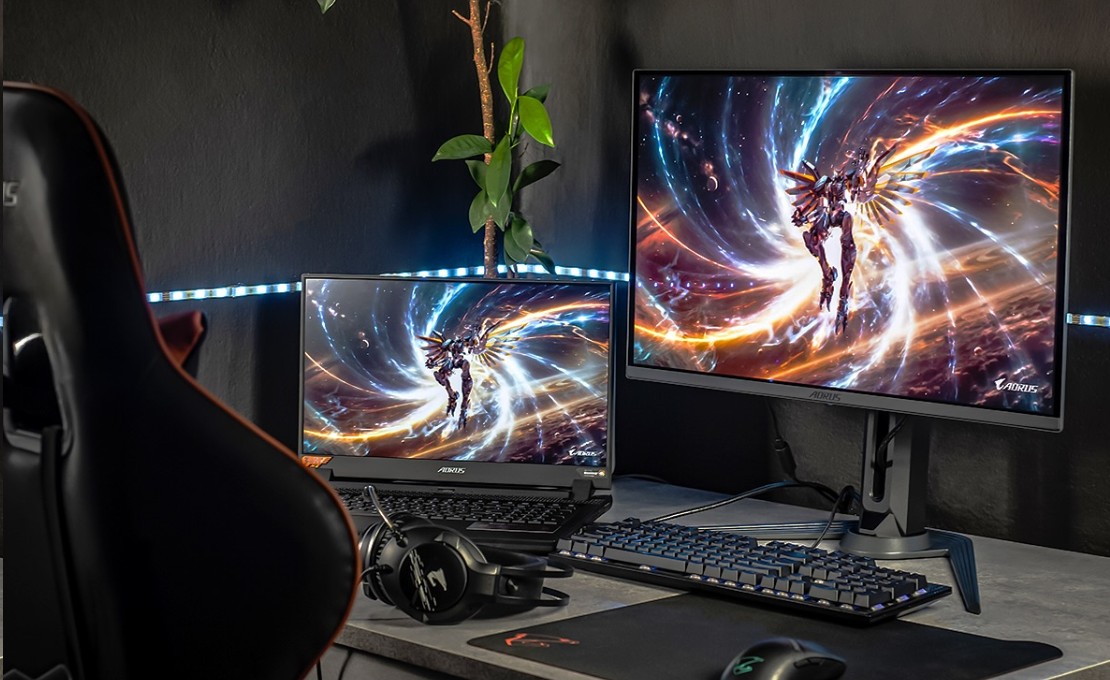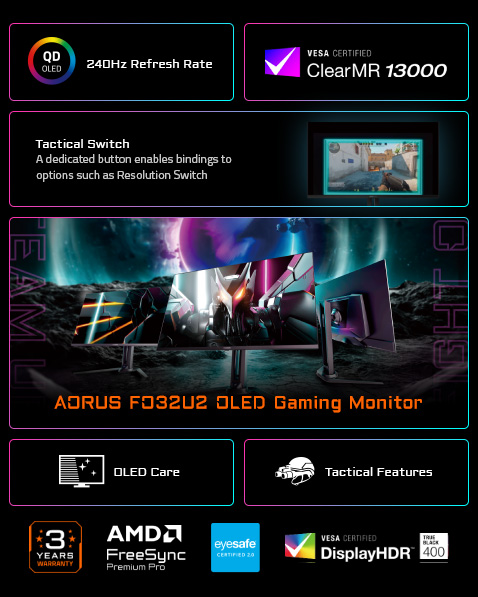Best OLED monitors for students: a buyer's guide
It’s back-to-school season, which means a great opportunity to upgrade your PC setup. For students, the right monitor can significantly enhance both academic and leisure activities. From late-night study sessions to unwinding with a game or movie, a quality monitor ensures your screen time is comfortable, efficient, and enjoyable.
One technology gaining attention now for its superior display quality is OLED. Known for its vivid colors, deep blacks, and thin design, OLED offers numerous benefits, especially for students who spend long hours in front of a screen. This guide will walk you through the key factors to consider when choosing an OLED monitor.
Understanding OLED Monitors
OLED (Organic Light Emitting Diode) is a display technology that differs significantly from traditional LCD or LED monitors. OLED panels are self-illuminating, meaning each pixel produces its own light, allowing for deeper blacks and more vibrant colors.

OLED vs. LCD: OLED displays outshine their counterparts with superior contrast, faster response times, and more vibrant colors. While OLED monitors may come at a steeper price point, the benefits are well worth the investment in the long run.
QD-OLED vs. WOLED: There are two main variants on the market: QD-OLED (Quantum Dot OLED), which combines OLED with quantum dot technology to enhance brightness and color accuracy, and WOLED (White OLED), which uses a different structure where white light is filtered to create colors. Both offer excellent image quality, but QD-OLED, backed by Samsung's innovation, tends to provide more vibrant colors.
Matte vs. Glossy: The finish on a monitor affects how light reflects off the screen. Matte finishes reduce glare, making them ideal for well-lit environments, while glossy screens provide sharper and more vivid images but can reflect light sources.
Key Advantages of OLED for Students

Image Quality: OLED monitors are renowned for their exceptional visuals and responsiveness. This makes them perfect for tasks that require precision, such as graphic design or video editing, as well as for immersive gaming experiences.
Eye Comfort: OLED monitors emit less blue light, which is known to cause eye strain and disrupt sleep patterns. The reduced eye strain and more comfortable viewing experience make OLEDs ideal for extended study sessions.
Design and Aesthetics: With their ultra-thin bodies and sleek designs, OLED monitors perform well and look great on any desk. Their minimalistic design saves space and adds a touch of modern elegance to your study environment.
Factors to Consider When Purchasing an OLED Monitor
There are several key factors to consider when purchasing an OLED monitor:
Screen Size and Resolution: It's important to consider screen size and resolution together, as they determine the pixel density (PPI) and overall visual experience—higher pixel density results in sharper images and more detailed content.
A 27-inch monitor is a great starting point for those exploring OLED options. For gaming needs, a monitor between 27 to 32 inches with a resolution of 1440p or higher provides an immersive experience with smooth visuals. For video editing or design work, a 27 to 32-inch monitor with 4K resolution ensures you can work with high precision.

Refresh Rate & Response Time: Measured in Hertz (Hz), the refresh rate indicates how often the image on your screen is refreshed per second. Gamers should look for monitors with a refresh rate of at least 120Hz for smooth gameplay and overall viewing experience.
Response time affects how quickly pixels can change colors, impacting gaming performance and video playback. A lower response time (measured in milliseconds) is preferable for fast-paced activities, such as gaming, for minimal motion blur.
Connectivity: Ensure the monitor has the necessary ports for your devices, such as HDMI, DisplayPort, and USB-C. This is particularly important if you plan to connect your monitor to a laptop, gaming console, or other peripherals.
Additional Features: Consider whether you need features like a curved display for a more immersive viewing experience, KVM functionality to control multiple devices with a single set of peripherals, or even tactical in-game assistance tools that will help elevate your gameplay.
Top GIGABYTE OLED Monitor Picks for Back-to-Schoolers
GIGABYTE offers a range of OLED monitors to cater to different student needs:
Gamers and Esports Enthusiasts: If gaming is your top priority, look no further than the AORUS FO27Q2. This 1440p monitor boasts an incredible 240Hz refresh rate and a response time of just 0.03ms, ensuring that you'll never miss a beat. With its exceptional picture quality and high-end gaming performance, this monitor is the perfect choice for gamers of all levels.

Students Focused on Design and Media: If your studies involve video editing or any media-related field, the 32-inch AORUS FO32U2 is a great option. It offers vivid 4K resolution with a DCI-P3 99% color gamut, ensuring your projects look their best. The ergonomic stand can be adjusted to fit your best viewing angle and pivot 90 degrees if you need a vertical view.

General-Purpose Students: Students seeking a balanced OLED monitor that can do it all should take a look at the GIGABYTE MO34WQC. Its 34-inch ultrawide screen enables efficient multitasking, while the built-in KVM functionality and HDMI 2.1 ensure seamless connectivity. The curved display provides immersive viewing for both work and leisure.

Tips for Using Your GIGABYTE OLED Monitors
While OLED technology offers many advantages, it's important to address concerns such as burn-in, which can occur when static images are displayed for extended periods. GIGABYTE's AI-based OLED Care features help prevent such issues by managing screen usage and incorporating built-in protections, ensuring your monitor remains in top condition for years to come.
GIGABYTE OLED monitors also support HDR, enhancing visual quality through deeper colors and improved contrast. Adjust brightness and contrast settings to match your environment and optimize viewing experience.
For first-person shooters, GIGABYTE offers a unique Tactical Feature called Resolution Switch, allowing gamers to quickly swap to their preferred 24-inch size and resolution at 1080p with a flick of a switch. Switching back to a larger screen at higher resolution for other tasks is equally easy.
Conclusion
Investing in a high-quality OLED monitor can greatly enhance both your academic and leisure activities. Learn how GIGABYTE OLED monitors can take your viewing experience to the next level by visiting our website or the AORUS Official YouTube channel for more info.
Learn More:
Introducing GIGABYTE OLED gaming monitors
How GIGABYTE OLED Care safeguards your OLED monitor from burn-in
Tactical insider: maximizing your FPS advantage with Resolution Switch
Decoding GIGABYTE and AORUS gaming monitor naming conventions